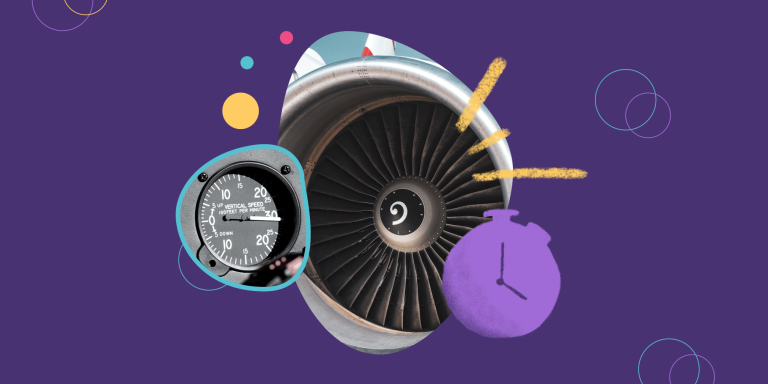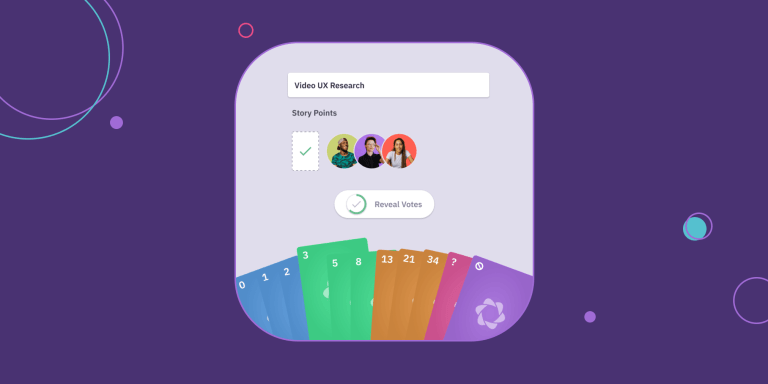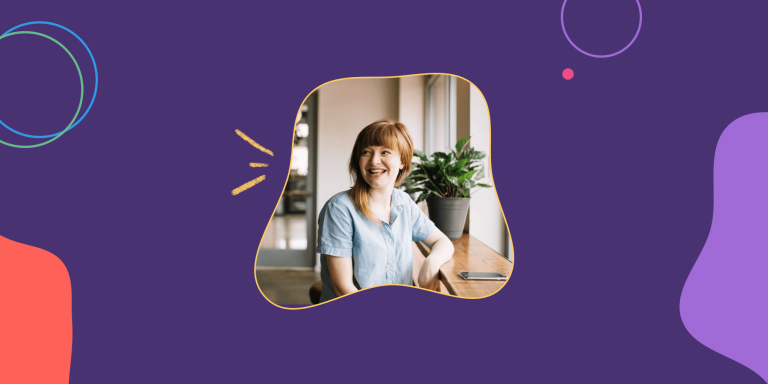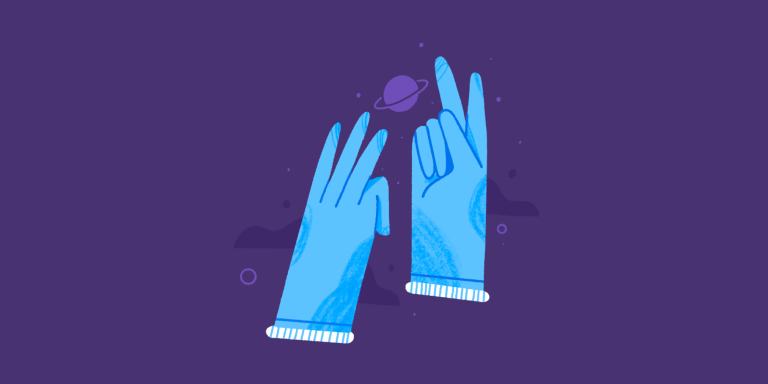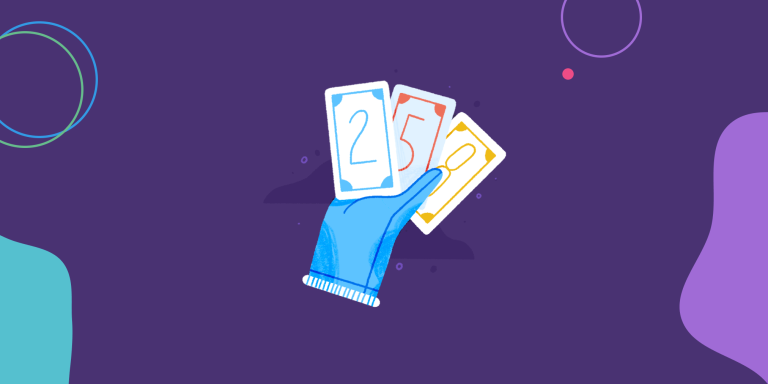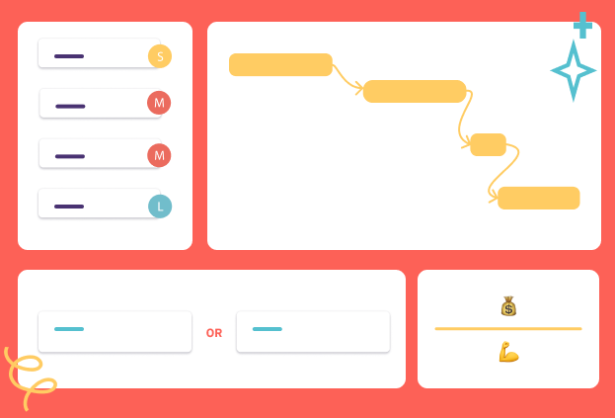45 User Story Examples To Inspire Your Agile Team
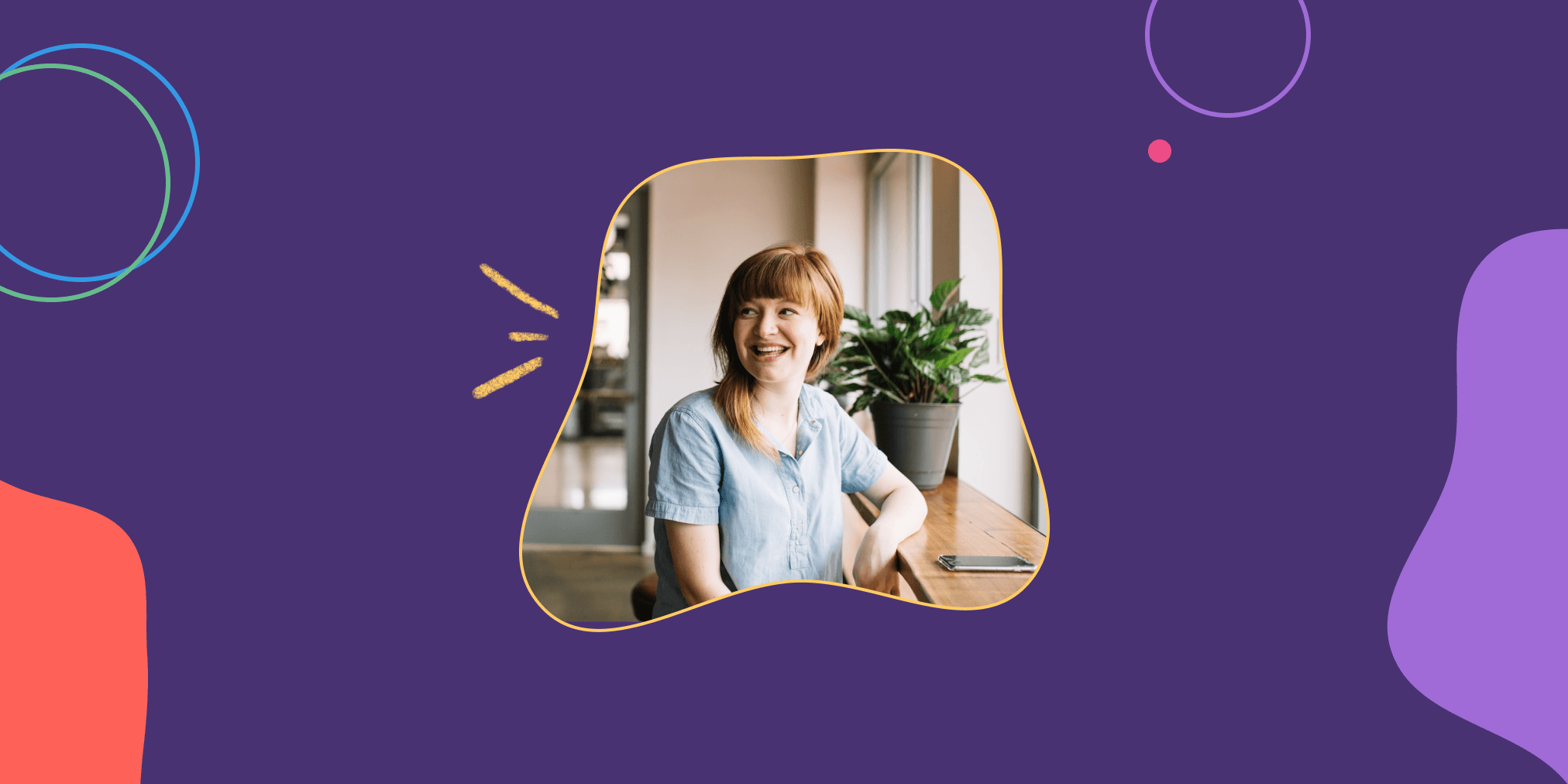
Writing user stories is a critical skill for agile teams, yet it can be challenging to master. A good user story guides your team’s work, ensuring your efforts create real customer value. But sometimes you need some user story examples to get you inspired! This article provides user story examples in different contexts, so you have a library to reference for inspiration when you write your own.
User stories in Agile: General examples
User stories in Agile describe the value a user wants from a product without dictating how to create this value. User stories help your team understand what needs to be built, why users need it, and for whom.
Before we look at examples in more specific contexts, here are some general examples that show how user stories can capture the voice and needs of the customer in a variety of scenarios:
- As an avid reader, I want to receive personalized book recommendations based on my reading history, so that I can discover new books that align with my interests.
- As a smart home owner, I want to control all of my smart devices from a single app, so I can easily manage my home’s technology.
- As a restaurant owner, I want to update my menu items in real-time on my website, so that my customers have accurate information.
👋 For a complete overview of user stories check out Parabol’s detailed guide on how to write user stories and try out our user story quiz!
User story examples for different domains and platforms
Each domain and platform brings unique needs and challenges for your customers. This section looks at user story examples for different contexts – from websites to banking systems.
User story examples for websites
Here are several user story examples related to common website functionalities like login, registration, and dashboard management.
User story examples for login
- As a user, I want an option to stay logged in, so that I don’t have to enter my credentials every time.
- As a user, I want to be able to reset my password if I forget it, so that I can regain access to my account.
- As a user, I want to see an error message if I enter incorrect login details, so that I know when my login attempt has failed.
User story examples for registration
- As a user, I want to log in via my social media accounts, so that I can quickly access the platform without creating a new account.
- As a new user, I want to choose my own username and password during registration, so that I can personalize my login credentials.
- As a new user, I want to provide my basic information during registration, such as name and date of birth, so that I can personalize my profile.
User story examples for dashboards
- As a user, I want to customize my dashboard, so that I can choose which information is most important to me.
- As an admin, I want to see user statistics on my dashboard, so that I can monitor the platform’s usage.
- As a frequent customer, I want to see product recommendations on my dashboard, so that I can discover new products I might like.
User story examples for mobile apps
Explore these user story examples for the specific needs and preferences of mobile app users.
- As a language learner, I want an offline mode in the language learning app, so I can continue learning without an internet connection.
- As a user of a news app, I want to be able to customize my news feed based on my interests, so that I can quickly find articles I want to read.
- As a user, I want to be able to easily sync my app data across multiple devices, so that I can access my information from anywhere.
User story examples for online shopping
A smooth shopping experience starts with a well-crafted user story. Here are three examples of online shoppers’ needs.
- As a customer, I want to track my order, so I can know when to expect delivery.
- As an eco-conscious shopper, I want to see environmental impact details for products, so I can make sustainable choices.
- As an online shopper, I want the ability to save products that I’m interested in for later, so I don’t have to search for them again.
User story examples for banking systems
To understand the needs and desires of customers using online banking platforms, let’s look at some user story examples related to banking systems.
- As a customer, I want to receive e-statements for my bank account, so I can reduce paper waste.
- As a user, I want to schedule future payments, so I can ensure my bills are paid on time.
- As a customer, I want to categorize my transactions, so I can better understand and manage my spending habits.
User stories for loan management systems
User stories can even address highly specialistic situations. For example, loan management is a critical aspect of banking systems. Here are examples of user stories that address such a specific context:
- As a loan officer, I want to be able to view a customer’s up-to-date credit history, so I can make informed loan decisions.
- As a borrower, I want to calculate my loan eligibility based on my income and credit score, so I know how much I can borrow.
- As a loan processor, I want to be able to track the status of a loan application, so I can manage my work effectively.
User stories for designers and developers
User stories can help improve communication between designers, developers, and stakeholders. This section includes examples from user experience (UX) design and software development scenarios.
UX user stories examples
Below are a few examples highlighting the crucial elements a user looks for when interacting with a product.
- As a user, I want to be able to customize the layout of my dashboard so that I can arrange the information in a way that suits me.
- As a user, I want the form validation to happen in real time so that I can correct any errors as I fill out the form.
- As a user, I want to be able to navigate the site using keyboard shortcuts so that I can perform actions more quickly.
Technical user story examples
These examples speak to developers’ and system administrators’ needs. Technical user stories are internal facing, focusing on core systems required to run or maintain a product or service.
Developer story examples
- As a developer, I want to implement a caching mechanism so that we can reduce page load times.
- As a system administrator, I want to monitor server performance so that I can proactively address any issues.
- As a developer, I want to create an API for our service so that third-party developers can integrate with our platform.
Backend user stories examples
- As a database administrator, I want to back up our data daily so that we can recover information in case of data loss.
- As a developer, I want to create a RESTful API so that our front end can communicate with our back end.
- As a developer, I want to implement an error logging system so that I can troubleshoot issues more effectively.
Jira technical story examples
- As a project manager, I want to integrate Jira with our CI/CD tools so that I can track the progress of builds and deployments.
- As a tester, I want to create bug tickets in Jira directly from our testing tool so that I can streamline the bug-reporting process.
- As a product owner, I want to create custom workflows in Jira so that our process accurately reflects in the tool.
Technical debt user story examples
- As a developer, I want to refactor our legacy code so that it’s easier to maintain and extend.
- As a developer, I want to improve our test coverage so that we can catch and fix bugs faster.
- As a developer, I want to replace our custom-built solution with a standard library so that we can reduce complexity and improve reliability.
User stories with acceptance criteria examples
User stories often go hand-in-hand with acceptance criteria. Acceptance criteria explain the specific requirements a user story should meet before you can mark it as complete. Here are several examples of such pairs.
- As a library member, I want to renew books online, so I can keep them longer without visiting the library.
Acceptance criteria: The system should provide the option to renew a book that is not overdue and not reserved by another member. After renewal, the due date should be extended. - As a restaurant customer, I want to reserve a table online, so I can ensure I have a place to eat at my preferred time.
Acceptance criteria: The system should show available times for reservations. After reservation, the customer should receive a confirmation. - As a music app user, I want to create playlists, so I can organize my favorite songs.
Acceptance criteria: The app should provide the option to create a new playlist and add songs to it. Users should be able to name their playlists and view them later.
User stories with requirements examples
While user stories and their acceptance criteria address a feature’s ‘what’ and ‘why,’ requirements delve into the ‘how.’ Requirements offer detailed instructions for implementation, often featuring technical descriptions or system interactions, which acceptance criteria usually don’t include. Here are some examples:
- As a banking customer, I want to transfer funds between my accounts, so I can manage my money effectively.
Requirements: The system should allow customers to select two accounts, enter an amount, and execute a transfer. The system should update the account balances immediately.
- As a job seeker, I want to save job listings I’m interested in, so I can apply for them later.
Requirements: The job platform should allow users to save job listings to a personal list, which they can view later. - As a driver, I want to find the fastest route to my destination, so I can save time on my journey.
Requirements: The navigation system should provide the shortest time route based on current traffic conditions.
Imitation to innovation: Crafting your own user stories
The true purpose of all these examples is to inspire you on a journey from imitation to innovation in crafting your unique user stories. The nature of your product, the specifics of your user base, and the challenges and opportunities your project presents will require a tailored approach. Use these examples as a starting point into exploring uncharted user story territory.
By crafting your own user stories, you’ll gain a deeper understanding of your users and their needs. You’ll find new and innovative solutions to old problems. And most importantly, you’ll build products that truly serve their intended users.
